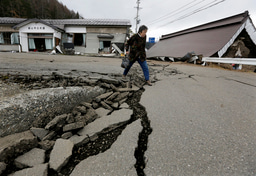Cyclone Biparjoy and Phosphorus Transitions: Tracing Dust Pathways to Asia’s Largest Grassland
Published in Earth & Environment, Sustainability, and Agricultural & Food Science
Authors
Rupak Dey, Seema B. Sharma, Mahesh G. Thakkar, Ranjit Kumar Sarangi, Abhiroop Chowdhury & Aliya Naz
The Story Behind the Research
The research was driven by a curiosity about how large-scale atmospheric events shape nutrient availability in grasslands. The Banni grassland, a unique and fragile ecosystem, has been undergoing rapid degradation. While phosphorus is known to be a limiting nutrient in such ecosystems, we wanted to explore how atmospheric deposition, particularly through dust storms and cyclonic activity, contributes to its availability. The unexpected landfall of cyclone Biparjoy in June 2023 provided a rare opportunity to study real-time changes in phosphorus transitions, adding an exciting, dynamic aspect to our study.
What We Did
We collected soil samples across different phases—before the cyclone, 48 hours after, and 20 days after landfall—to analyze phosphorus activation patterns. Using remote sensing and historical aerosol data from MERRA-2, we examined dust pathways and deposition trends. The study employed statistical analyses to compare phosphorus levels across different time frames, revealing the impact of cyclonic dust deposition on bioavailable phosphorus.
Key Findings
- Dust as a Major Phosphorus Source: The Middle East, North Africa, and the Thar Desert were identified as significant contributors to phosphorus deposition in the Banni grassland.
- Cyclone Biparjoy’s Influence: The cyclone transported dust along existing aerosol pathways, intensifying phosphorus deposition in the study area.
- Microbial Activity and Bioavailability: Post-cyclone soil samples showed an increase in phosphate-solubilizing microorganisms (PSM), which facilitated the conversion of locked phosphorus into bioavailable forms.
- Long-Term Nutrient Implications: The study provides evidence that dust storms and cyclones can act as natural fertilizers for grassland ecosystems, influencing plant productivity and nutrient cycles over time.
Implications of the Study
This research highlights the interconnectedness of atmospheric processes and terrestrial nutrient cycles. Understanding how dust storms and cyclonic events shape phosphorus availability in grasslands can help develop better conservation and land management strategies. With climate change increasing the frequency of extreme weather events, further research is needed to assess long-term ecological consequences.
Figures and Media
We included satellite imagery and GIS-based maps to illustrate dust movement and deposition trends. The study also features statistical analyses of phosphorus fluctuations across different time phases.
Conclusion
Our findings underscore the role of atmospheric dust transport in shaping phosphorus dynamics in grasslands. As global dust emissions fluctuate due to climatic changes and human activities, studies like this will be crucial in predicting and mitigating ecosystem transformations.
Follow the Topic
-
Scientific Reports

An open access journal publishing original research from across all areas of the natural sciences, psychology, medicine and engineering.
Related Collections
With Collections, you can get published faster and increase your visibility.
Obesity
Publishing Model: Hybrid
Deadline: Apr 24, 2026
Reproductive Health
Publishing Model: Hybrid
Deadline: Mar 30, 2026




Please sign in or register for FREE
If you are a registered user on Research Communities by Springer Nature, please sign in